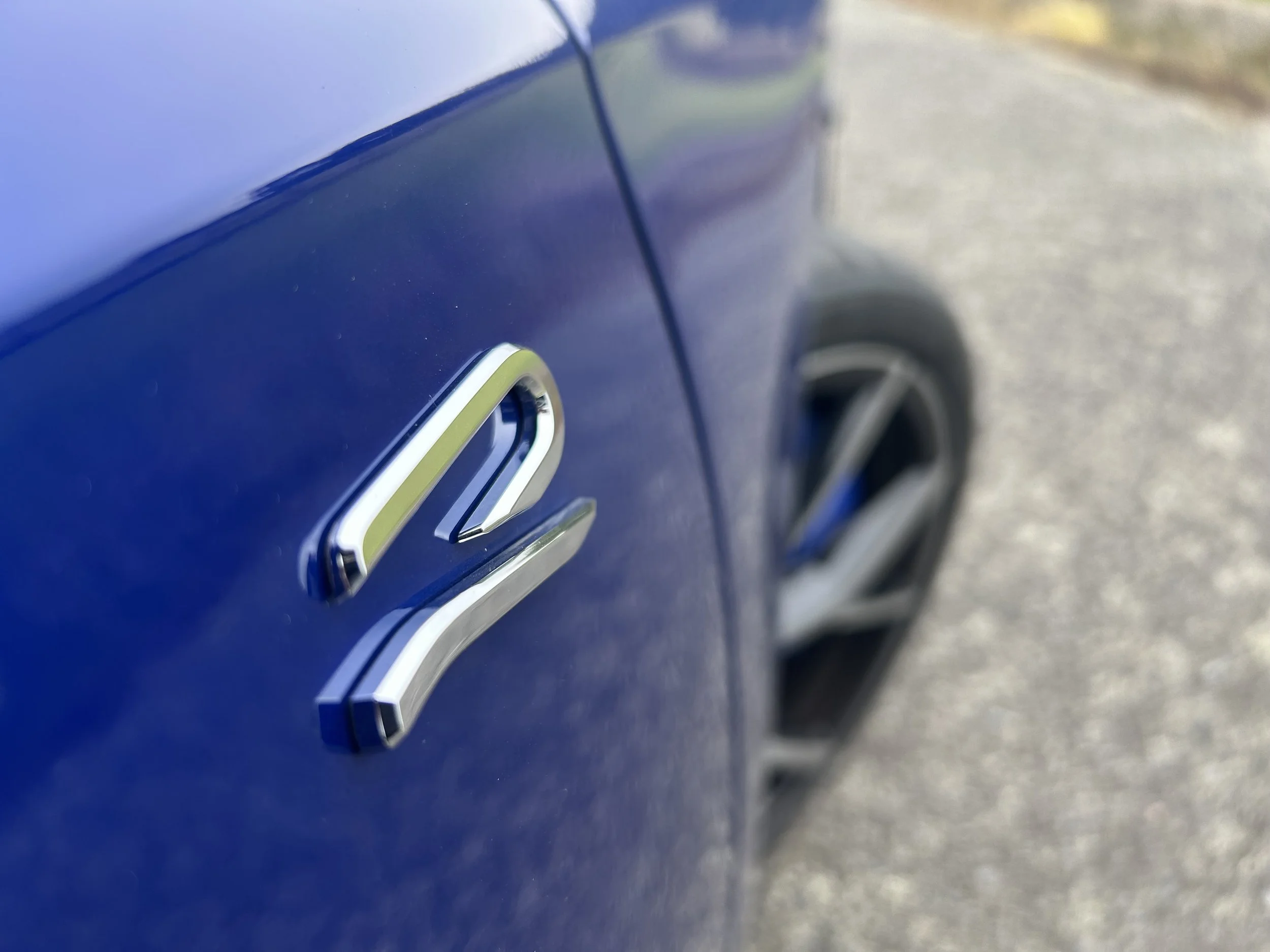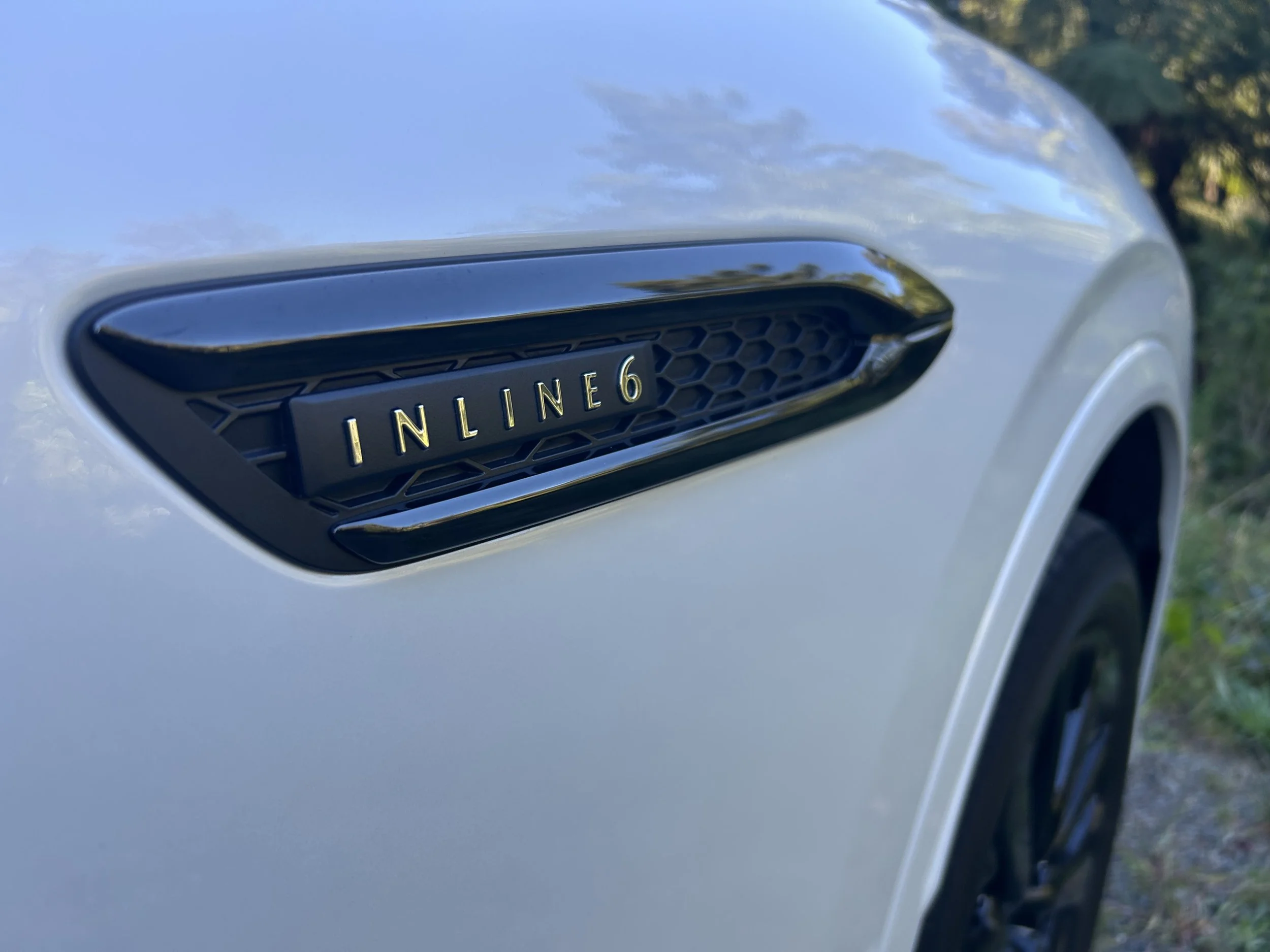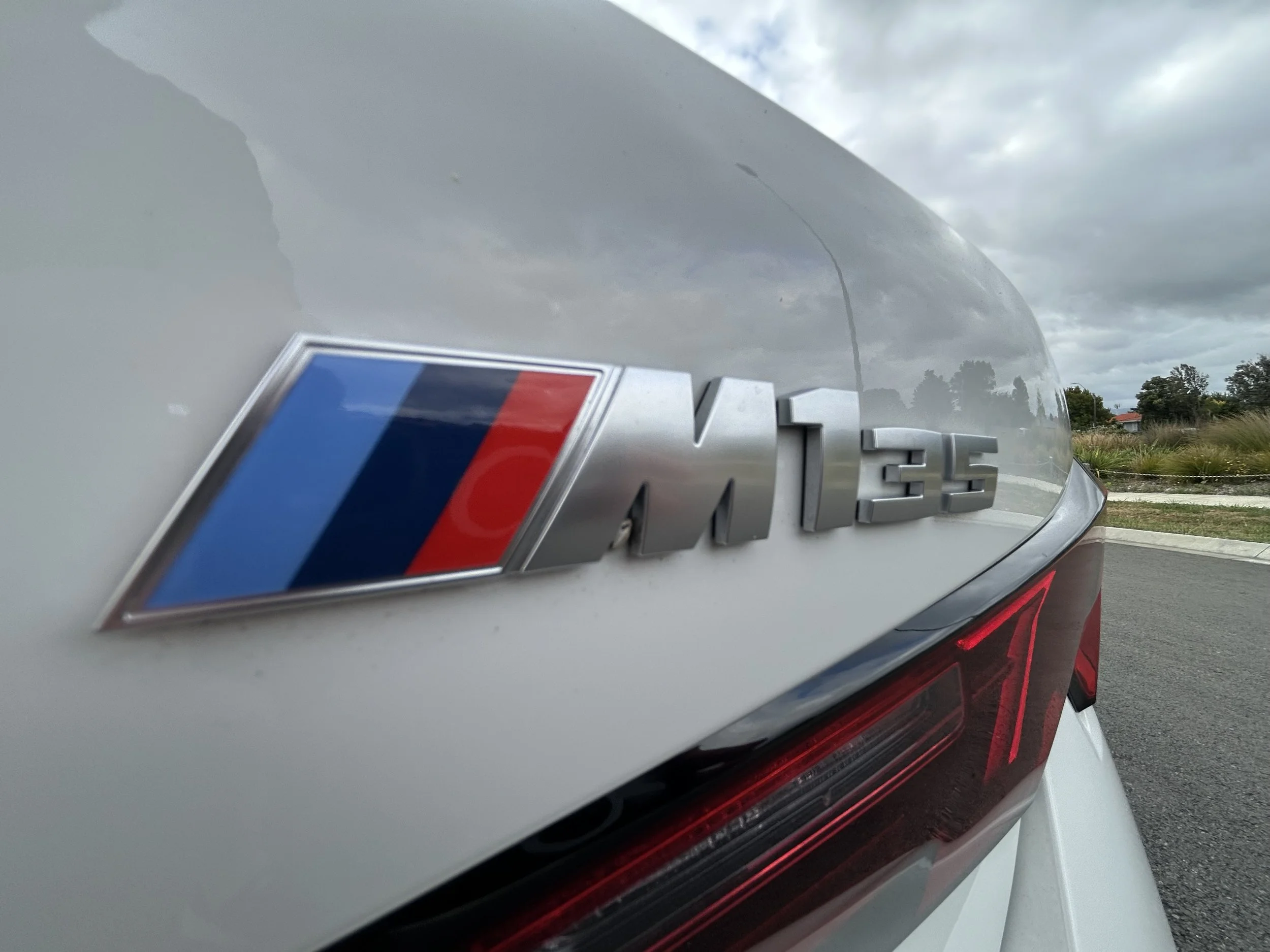Citroen C5 Aircross PHEV roadtest review: High wire act
/These stylish good looks shine brightly in a crowded compact sports utility market, but is the power trip it offers worth taking?
Price (before rebate): $79,990
Powertrain and economy: 1.6-litre turbocharged four-cylinder petrol with electric motor assist, 13.2kWh lithium ion battery, 165kW/360Nm combined, FWD, claimed optimal economy 1 litre/100km.
Vital statistics: 4500mm long, 2099mm wide, 1689mm high, luggage capacity 460/1510 litres.
Safety: Five stars NCAP
We like: Distinctive design, a comfy drive, articulates good-natured family living.
Not so much: Priced against full electrics with similar capability, no DC charging, tailgate height issues.
WHEN they’re good, they’re very, very good … and when they’re bad?
That’s a big headline.
A round of real-world tests suggesting official laboratory tests could be dramatically understating emissions from plug-in hybrid technology was making news in the week I was driving Citroen’s entry into that sector, and more has happened since.
First was an international finding in which all the more insult hit the C5 Aircross because it was an indirect brand injury. One of the test subjects for a trial carried out by Graz University in Austria was a cousin from sister marque Peugeot, the 308 PHEV that’s just landed here.
Like others before, the Graz trial revealed discrepancy between the official emissions data for the vehicles and their real-world performances.
In this instance, when put through a series of three test routes on public roads designed to replicate typical commuter journeys, with exhaust gases produced from each recorded, the Peugeot, a BMW 330e xDrive and a Renault Megane E-Tech PHEV appeared to be outputting well above their laboratory test-derived combined CO2 cycle counts. Between 1.2 and 1.3 times higher than the WLTP (worldwide harmonised light duty vehicles test procedures) numbers when the batteries were charged; up to five and seven times higher when they were depleted.
The tests also raised questions over the quoted electric-only ranges, two of the three falling short. Which didn’t? It was French. But not from PSA.
More recently, Consumer NZ weighed in against hybrids and PHEVs with a much less scientific analysis of economy and also thought the tech wanting.
The WLTP data required on new cars’ information cards comes from test almost all car makers have to put all their cars through – not just models but every version of those – to determine how much fuel they burn and what level of emissions come out.
It’s a lab test. A much superior test to one it bumps but still influences here, NEDC (New European Driving Cycle), as it relies more heavily on data taken from real-world drive cycles to more accurately represent, you know, real-world drive cycles. But it still requires mathematic models. WLTP doesn’t account particularly well for traffic and weather conditions or behaviour; that one person might accelerate harder, take corners faster or brake more suddenly than another, who might drive more conservatively.
The test that can fully account for these and other variables has yet to be devised and would be welcomed. Anything that can bring results for any cars closer to those experienced by owners would surely be beneficial for the industry and consumers.
Inconsistencies of this kind are a challenge, not least for plug-replenished hybrids as they in particular seem especially finetuned between delight and distaste.
Used properly with electric as the primary power source and combustion as a back-up, and you’re sweet. You can see some spectacularly positive economy (and, in theory, emissions) outcomes. The thrift occurred with the Citroen; we’ve no way to evaluate the exhaust outputs but would hope those reduced as well.
Conversely, become neglectful and, even before point where the electrics have boat anchor status – that is, the battery is no use (it won’t be completely flat, because it’s designed not to be, but it’s not assisting either) – operate in an environment that is most taxing on the drivetrain and start to rag an engine that’s already having to work harder (because it’s dragging the ‘dead’ weight of an inactive electric system) … and, oui, it’ll drink quite a lot harder. That happened on test, too.
Three days driving to best use, then another three to worst, with a day in between to squeeze out the battery’s potential goodness, nonetheless indicated the good outweighs the bad.
Sure, it’s better with the battery involving enthusiastically; let that side deplete to zero – which it never truly reaches, as batteries are designed to keep some zap in reserve for sake of long-term preservation – and there’s a bit less oomph and unsurprisingly refinement lapses a little as well.
The overall consumption of 7.7 litres per 100km on test, though a world away from the one litre per 100km optimal Citroen claims from WLTP assessment, was interesting in that it related as 0.5L/km superior to the cited thrift from the pure petrol Aircross with the same engine (but lacking the electric side) on the same test.
So is the battery helping even when it says it is not? Quite potentially, it could be dribbling in some assist. Wither way, was still reasonable enough to show why PHEVs can be considered a reasonable option for those who want to go greener but aren’t ready to make the jump to a fully electric.
But, agreed, understanding the system is expected and that’s especially applicable with Citroen’s drivetrain because, in typical Euro style, everything – the engine, the battery size, the electric motor – implements in modest degree.
Specifically, it’s ‘only’ a 1.6-litre, turbo petrol engine with ‘just’ a 13.2kWh battery and single (front) electric motor. Power elevates from 133kW to 165kW (combined); a ‘mere’ 32kW. It’s not a street racer. The added kit raises kerb weight by 340kg – three beefy adults; 10 years’ worth of Camembert for the average French family - so it’s just shy of 1.8 tonnes.
Citroen claims of it delivering 47 kilometres’ electric driving is a trifle optimistic; the best I saw was Gallic shrugging 42. Even the best is 37km shy of what the big gun of the sector, the similarly-priced Mitsubishi Outlander PHEV (with a larger battery) will deliver. Replenishment at home on a 7.4kW wallbox takes two hours; if, like me, you have a domestic socket, that’ll stretch to up to seven. Because it hasn’t facility for DC charging, replenishment away asks for you to seek out a bespoke AC connector. A bit of a faff.
When the car fires up, it generally defaults to pure electric and will stay that way until otherwise instructed. The EV priority is great for quiet getaways yet, with a brief 100kmh involvement unavoidably occurring early in my daily driving route, a switch hydrid mode was logical intervention. The drivetrain worked stronger without abdicating much thrift.
When working on with any particular indicated semblance of electric assist, you do sense the engine is working harder and the eight-speed auto’s responses lose some slickness, but it’s still an effective car, never sounding coarse, desperate or thrashy even under full throttle.
Still, keeping the battery fed does make for a happier, slightly more spritely and smoother involvement. The refinement steps up and any sense of exertion from the e-motor when it is assisting so that the combustion engine doesn't have to work as hard is well concealed. The transmission smooths out, too.
For this, and a whole lot of other reasons, the sensibility of keeping the electrics at best health makes for solid logic and the way to do it, by taking every opportunity to plug it in, also seems sensible. The whole ‘small meals, often’ mantra has as much relevance for this PHEV as any other. Plus, of course, the more you can use the pure EV mode – which it can drive in at up to 130kmh – the better, if journeys are short, because it’s cheaper by far.
It’s understandable why some makers are leapfrogging this transition tech and why the last year has seen sales momentum shifting all the more firmly in favour of fully electric vehicles.
For most households with the ability to charge at home, a full EV has more than enough battery range to cover the vast majority of their driving needs. Plus, as much as Citroen’s PHEV will have appeal to those who regularly need to drive long distances and can’t afford to spend time charging, it’s not a cheap car to access.
Yous could get stuck on that, or you could just see it as a good solution for wider reasons; one being that it exudes a level of suaveness in appearance and attitude that you don’t get from most rivals.
A decent dollop of styling drama is always part of the PSA playbook; these days there’s just no such thing as a dull-looking French car. Within its clique Citroen is the extrovert and quirkiness is also a trademark. That all fuels a distinctive exterior aesthetic, not weirdo different but still a step away from the ordinary, the curvy styling, sharp grille and distinctive lights are the big points of difference but even just having Airbumps bubble wrap the lower bodywork, to protect against the biffs of urban life, help ensure it’ll be an easy car to pick in a crowd.
The interior also steps up dedication to French flamboyance; not to point where you will be befuddled, but certainly it’s a bit different to how a Japanese or Korean brand would do things. The central feature of the cabin is, as always, a big touch screen delivering most of the vehicle's interior functions, as is the PSA way, but which can be fiddly to use on the move.
It of course features a number of driver assistance and active safety technologies as standard, including low-speed autonomous emergency braking, blind-spot monitoring, lane departure warning, hill-start assist, driver attention monitoring, an automated self-parking assistant and speed sign recognition.
Comfort and convenience are clearly the guidelines here; keeping everyone relaxed has been acknowledged as a primary in this model. To meet that end it achieves Citroen's Advanced Comfort programme, which configures in two important ways, with suspension with Progressive Hydraulic Cushions and also with Advanced Comfort seats.
The latter translates to seats whose structure implements specially tuned foam and represent as a pair of very nicely contoured chair-like front seats that impressed with their long-distance comfort, offering good back and thigh support, along with a decent amount of adjustment for the driver so you can find your ideal driving position. What impresses just as much is that the rear bench isn’t a second-class option, as some are. The three seating spots there are of equal comfort.
The taller roofline and a panoramic glass roof being part of this package means there's a feeling of enhanced space and airiness. Visibility is great too, thanks to the large glasshouse, bar the rear window which is a little skinny. Standard blind-spot monitoring and a decent rear-view camera counter any over-the-shoulder visibility quirks, though.
The interior design is as eye-catching as the bodywork. Just on edge of plush, but thoughtfully falling short of utter poshness because, well … what would be the point when practicality is really the primary reason for buy-in?
The whole car seems attuned to family life, with sensible touches everywhere – from good-sized cupholders to plenty of storage in the cabin, including in the doors - and hard-wearing materials in all the right places, including on the exterior.
Having rear seats that can slide, fold or recline individually to enhance the generosity of rear-seat space; you can prioritise legroom or luggage space as you need is a strong plus. There’s 580 litres of boot space in this PHEV and the load bay is a good shape; it’s a shame, though, that rather than deliver an under-floor location for the charging cables, they have a ‘cake tine’ style holder velcroed to the boot floor. Another moan is that the power operated tailgate is a little low when open; as a tall person, I had to watch out to avoid smacking my forehead against the sharp edge of the bootlid.
The suspension design might sound as off-the-wall as the hydro-pneumatic system that now resides only the brand’s museum collection, but it’s actually a wholly different idea, though no less innovative.
On the one side, it’s tied to Citroen’s thinking about what most SUVs do. Which isn’t to go off road. While it claims a healthy ground clearance, the C5 Aircross is not imagined as an ardent off-seal warrior, so four-wheel drive isn’t even on the options list. Instead, it has Grip Control, is effectively a traction control system that adjusts to suit different terrain and will be fine for the usual low-risk conditions.
This approach allows Citroen to address the bugbear it has with crossovers and SUVs; this being that many suffer in terms of ride comfort. It’s the cost of them running big wheels – which this car still has, with 19-inch rims - and stiff suspension to stop them rolling about in the corners.
Given that it’s not a car for rugged outdoor pursuits, it might seem ironic that Citroen’s remedy is drawn basically, from tech it developed for the competition cars it once ran with huge success in World Rally Championship; fluid-filled cushions within the suspension construct. While the C5 system isn’t of course tailored have to cope with Loeb-level smashing over massive jumps at 200kmh, it is there to smooth away the impacts of potholes and speed bumps without any banging or crashing.
It seems to work very effectively and, more impressively, comes up aces at open road pace; it’s hard to think of another car in its category that is as impressively smooth and serene over scruffy surfaces as this one is at 100kmh.
Sure, there’s some roll through the corners, but this is a family car, not a hot hatch. All in all, for ride it delivers a refreshing change from the wider competitive set and while the focus on comfort and refinement means it's not the sharpest car to drive, it doesn't sacrifice alertness as much as you might think. The steering is light, but there’s is precision and the car changes direction predictably, with enough grip and composure.
Citroen being a niche brand, with limited representation, will make this a limited sight, but also potentially keeping its volume modest is where it sites in the market.
Interestingly Citroen elected to make this derivative front-drive only to keep the price down, whereas Peugeot offers the 3008 sister model with a more expensive system with four-wheel-drive via an extra rear-mounted motor that is rather more expensive still. Fact is, though, a C5 Aircross will all the same practical attributes and dynamics but with simply a petrol engine can be bought for $21k less than the one on test, which at its pricing is also mixing against a variety of fully electric cars of similar size. The base Ford Mustang Mach-e, two versions of Kia EV6, one of the Hyundai Ioniq 5 and Ioniq 6 stand out.
The Clean Car discount is greater for those than it is for the Citroen. On that note, too, while the C5 earns a $5750 Government cheque, even the pure ICE one is frugal and clean enough to achieve a $1200 rebate.
The ‘best return’ scenarios here are potentially convenience and reassurance for long trips into unfamiliar territory and, for those who rarely drive more than 50km a day, a way to drive electric without limitations. As is common with PHEVs, making sense of the cost impacts, pros and cons, here requires significant calculus and no shortage of head-scratching. Plugging in at every non-driving opportunity is the best way, always.
























